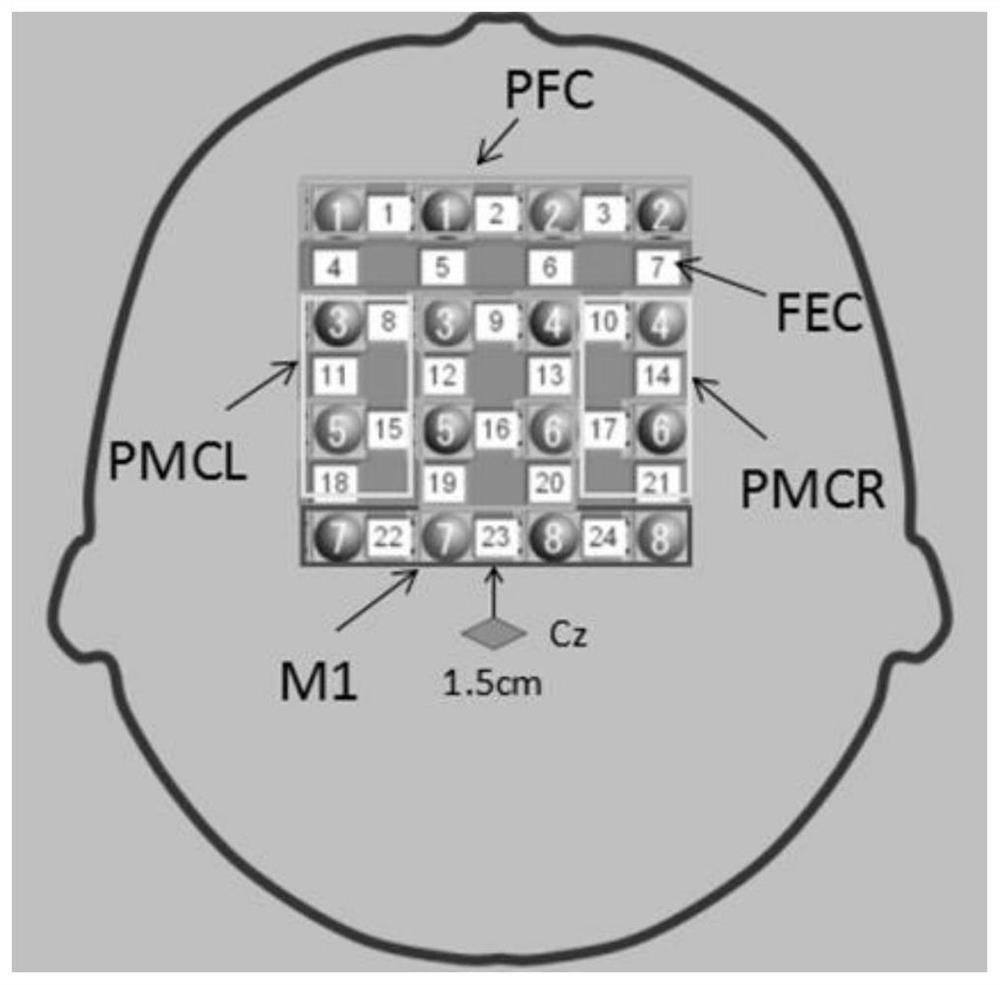Recognition method to determine whether a motor task achieves its final goal
A technology of ultimate goal and motion task, which is applied in the field of rehabilitation training and intelligent assistance, can solve the problems of electrical noise interference, low spatial resolution, impact, etc., and achieve the effect of improving accuracy, low sensitivity, and easy operation
- Summary
- Abstract
- Description
- Claims
- Application Information
AI Technical Summary
Problems solved by technology
Method used
Image
Examples
Embodiment
[0035]1. Headgear design: The brain regions tested in this study are mainly based on Broadman's hierarchical anatomy system of the brain, which was proposed by German scientist Korbian Brodmann. This system is currently the most commonly used and widely used system, and is favored by most brain science researchers. Under the Broadman system, according to the above-mentioned brain area studies, this paper identified the PFC and M1 areas as important monitoring and analysis areas. In order to improve the measurement accuracy of the target brain region, the 10-20 system was used to locate the brain region in the experiment. By configuring the layout of the light transmitter and receiver through this system, the final helmet headgear layout is shown in the figure.
[0036] The specific process of the experiment: Before the task started, the subjects were kept in a state of rest for 50 seconds, and then considering the difficulty of the action target, the subjects were asked to co...
PUM
 Login to View More
Login to View More Abstract
Description
Claims
Application Information
 Login to View More
Login to View More - R&D
- Intellectual Property
- Life Sciences
- Materials
- Tech Scout
- Unparalleled Data Quality
- Higher Quality Content
- 60% Fewer Hallucinations
Browse by: Latest US Patents, China's latest patents, Technical Efficacy Thesaurus, Application Domain, Technology Topic, Popular Technical Reports.
© 2025 PatSnap. All rights reserved.Legal|Privacy policy|Modern Slavery Act Transparency Statement|Sitemap|About US| Contact US: help@patsnap.com



